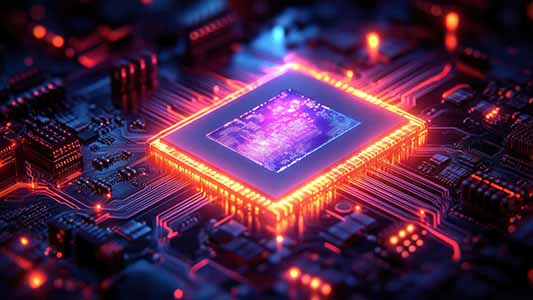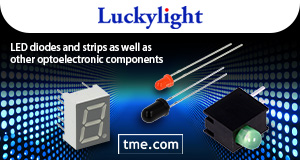Sulphuric acid (H₂SO₄) is one of the most widely used industrial chemicals in the world, renowned for its versatility and powerful acidic properties. Among its various forms, Chip Grade Sulphuric Acid holds a special place due to its critical role in the manufacturing and cleaning processes of semiconductors and microelectronic components. This high-purity acid is essential in the production of silicon chips that power everything from smartphones to supercomputers.
What is Chip Grade Sulphuric Acid?
Chip grade sulphuric acid, also known as electronic grade or ultrapure sulphuric acid, is a highly refined form of H₂SO₄. It is manufactured with extremely low levels of impurities—often in the parts-per-billion (ppb) or even parts-per-trillion (ppt) range. Even minute contaminants like metal ions, organic compounds, or particles can damage semiconductor wafers, making purity a non-negotiable attribute.
To put this in perspective, industrial sulphuric acid used in fertilizers or metal processing contains impurities that would be catastrophic in chip fabrication. Thus, chip grade acid is produced under stringent quality control systems and is subjected to rigorous purification methods including distillation, ion exchange, filtration, and degassing.
Why is it Required?
In semiconductor fabrication, even a microscopic particle or a trace metal ion can cause defects in the integrated circuits being manufactured. Chip grade sulphuric acid is used in multiple stages of semiconductor processing:
1. Wafer Cleaning: It helps remove organic and inorganic contaminants from silicon wafers.
2. Etching: It assists in controlled removal of material layers, which is essential for circuit patterning.
3. Photoresist Stripping: It helps dissolve the light-sensitive coatings used in photolithography processes.
4. Oxide Layer Formation: Sulphuric acid can aid in the formation of oxide layers, which are key in isolating semiconductor regions.
Its powerful oxidizing ability, especially when mixed with hydrogen peroxide (forming Piranha solution), makes it particularly effective at breaking down stubborn organic materials.
How Does It Work?
The effectiveness of chip grade sulphuric acid lies in its chemical reactivity and physical properties:
▪Strong Acidity: It protonates molecules and facilitates the breakdown of complex organic residues.
▪Dehydrating Nature: It can remove water from materials, which helps in cleaning and etching.
▪Oxidizing Agent: When combined with oxidants like H₂O₂, it aggressively attacks carbon-based contaminants.
▪Thermal Stability: It remains stable at high temperatures often used in semiconductor cleaning baths.
Moreover, the use of ultrapure acids ensures that the surfaces remain free from unintended metal deposition, scratching, or chemical reactions that could interfere with electrical performance.
Applications Beyond Semiconductors
While chip grade sulphuric acid is primarily used in the semiconductor industry, it also finds applications in:
▪Photovoltaics (solar panels): For silicon wafer cleaning and etching.
▪LCD and OLED Display Manufacturing: For removing contaminants and patterning layers.
▪Pharmaceuticals and Laboratories: Where ultra-clean environments are needed.
Key Global Players
The market for chip grade sulphuric acid is relatively niche but highly specialized, dominated by a few global chemical giants:
1. BASF SE (Germany) – Known for high-purity electronic chemicals including acid solutions.

2. Kanto Chemical Co., Inc. (Japan) – A major supplier of ultra-high purity chemicals in Asia.
3. Avantor, Inc. (USA) – Supplies high-purity acids and solvents to laboratories and chip manufacturers.
4. Honeywell International Inc. (USA) – Offers electronic-grade chemicals under its specialty materials division.
5.Moses Lake Industries (USA) – A prominent supplier of high-purity process chemicals for advanced IC production.
6. Soulbrain Co., Ltd. (South Korea) – Supplies wet chemicals to major semiconductor fabricators like Samsung and SK Hynix.
With the rise of AI, 5G, and autonomous vehicles, the demand for advanced chips—and by extension, chip grade sulphuric acid—is rising exponentially. Countries like the U.S., Taiwan, South Korea, Japan, and increasingly India and China are investing heavily in domestic semiconductor production, which will further fuel the demand for this specialty acid.
Challenges and Future Outlook
One of the main challenges in the production of chip grade sulphuric acid is maintaining consistent purity during transportation and storage. Even the containers and pipelines must be specially coated to prevent contamination. Moreover, sustainability concerns are pushing manufacturers to recover and recycle acid used in the chipmaking process, a complex but increasingly necessary endeavor.
In the future, as chip architectures become even smaller—approaching the sub-3 nanometer scale—the purity requirements for process chemicals like sulphuric acid will only become stricter. Innovation in purification technology and smart handling systems will play a key role in supporting this evolution.
References:
1)https://www.kanto.co.jp/english
2) https://www.basf.com
3) https://www.moseslake.com
4) Several other web pages are also referred to.












